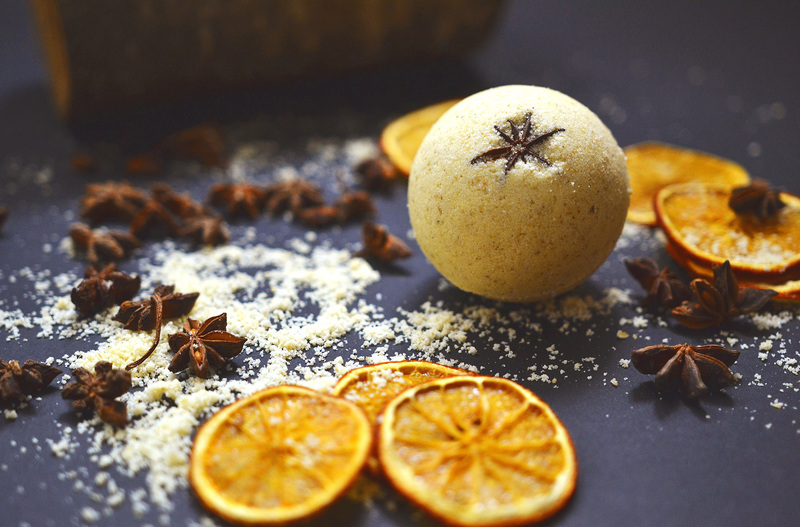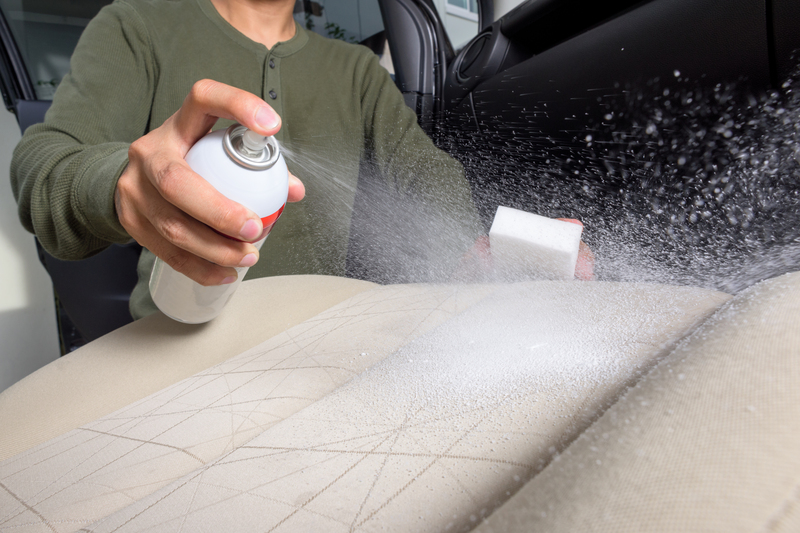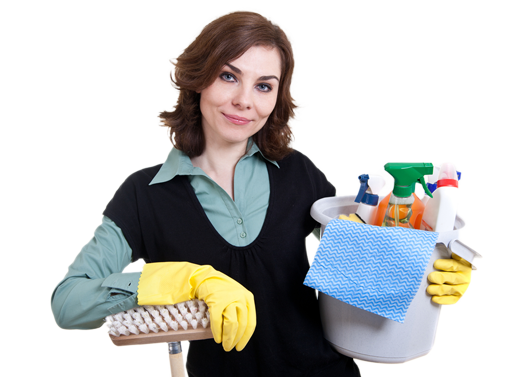The Ultimate Guide to Preventing Bathroom Mold
Posted on 16/06/2025
The Ultimate Guide to Preventing Bathroom Mold
Bathroom mold is one of the most common and frustrating issues homeowners face. Not only is it unsightly and potentially harmful to your health, but it can also damage your bathroom's structure and finishes. Thankfully, there are many effective ways to prevent mold in the bathroom and maintain a healthy, beautiful space. This comprehensive guide will walk you through everything you need to know, from causes to prevention and maintenance. Let's dive into the ultimate checklist for a mold-free bathroom!
Understanding Bathroom Mold
Before we explore prevention strategies, it's crucial to understand what bathroom mold is and why it loves your bathroom so much.
What Is Bathroom Mold?
Mold is a type of fungus that thrives in damp, warm, and poorly ventilated areas--making bathrooms the perfect breeding ground. The most common types of bathroom mold are Aspergillus, Cladosporium, and Stachybotrys chartarum (black mold). These organisms reproduce by releasing spores into the air, which can cause allergies and respiratory issues if left unchecked.
Why Does Mold Grow in Bathrooms?
- High Humidity: Showers and baths generate moisture, which accumulates in the air and on surfaces.
- Poor Ventilation: Without proper airflow, humidity has nowhere to escape.
- Water Leaks: Drips from pipes, sinks, or the toilet can create damp areas perfect for mold growth.
- Organic Material: Soap residue, shampoo, and dust provide food for mold spores.

Steps to Prevent Mold Growth in Bathrooms
Preventing mold in your bathroom involves a combination of good habits, regular maintenance, and the right materials. Below, we lay out expert tips and tricks to keep your bathroom fresh and mold-free every day.
1. Control Humidity
High humidity is the main culprit behind bathroom mold. Keeping humidity levels below 50% is essential.
- Use a vent fan: Always switch on your bathroom exhaust fan during showers and baths, and leave it running for at least 20 minutes afterward.
- Open windows: If your bathroom has windows, open them to promote airflow and help damp areas dry faster.
- Invest in a dehumidifier: For bathrooms without proper ventilation, a small dehumidifier can make a massive difference.
- Wipe down wet surfaces: After showers, quickly squeegee or towel-dry walls, mirrors, and glass doors to remove excess moisture.
2. Repair Leaks Promptly
Even small leaks can create persistent damp spots that encourage mildew and mold. Inspect your plumbing regularly, including:
- Under-sink pipes
- Toilet seals and around the tank
- Bathtub and shower fixtures
*If you spot any leaks, fix them immediately*--even slow drips! Not only will this prevent bathroom mold, but it will also guard against costly water damage.
3. Clean Regularly with Mold-Preventing Solutions
Consistent cleaning is the best defense against black mold in showers and other trouble spots. Focus on:
- Tiles and grout: Scrub with a mildew-resistant cleaner weekly.
- Shower curtains: Wash fabric curtains in hot water and replace plastic liners every few months.
- Fixtures and faucets: Shine up taps and handles to remove soap residue and potential spore buildup.
- Hidden corners: Don't forget to check under shelves and behind toilets!
Tip: Make your own anti-mold spray by combining one cup of white vinegar with one cup of water in a spray bottle. Mist and wipe down surfaces after each use.
4. Make Smart Design Choices
- Use mold-resistant paint: Paints with antimicrobial agents are available specifically for bathrooms.
- Tile wisely: Larger tiles mean fewer grout lines for mold to hide in.
- Avoid wall-to-wall carpet: Instead, opt for washable bath mats.
- Install moisture-resistant materials: Cement backer boards and waterproof wall panels are superior to drywall for wet zones.
5. Keep Clutter to a Minimum
The more items you store in your bathroom, the more surfaces there are for mold spores to land and spread. Clear countertops and organize products so that air can circulate freely.
6. Ensure Proper Drainage
- Maintain shower and sink drains: Remove hair or soap buildup regularly to prevent pooling water.
- Check drainage slope: Especially in walk-in showers. Standing water is a welcome sign for mold.
7. Monitor Humidity with a Hygrometer
An affordable digital hygrometer lets you track humidity levels in real time. This tool provides an early warning if the air is getting too moist--helping you take action before mold appears.
Targeting Common Problem Areas
Some parts of your bathroom are more vulnerable to mold than others. Focus special attention on:
- Shower and Tub: Grout, caulking, and corners can trap moisture.
- Ceilings: Steam rises--look for condensation and stains above the bath.
- Behind the Toilet: This area often stays out of sight and is prone to leaks and dust buildup.
- Under Sinks: Spills and drips create persistent dampness.
- Window Sills: Condensation and organic matter can accumulate, especially in winter.
How to Remove Bathroom Mold Safely
Sometimes, despite your best efforts, mold can sneak in. Early action is critical to prevent it from spreading:
DIY Mold Cleaning Methods
- Vinegar Solution: Spray white vinegar directly on the affected area, leave for one hour, then scrub with a brush and rinse clean.
- Baking Soda Paste: Mix baking soda with water to form a paste. Apply, let sit, scrub, and rinse.
- Hydrogen Peroxide: Use 3% hydrogen peroxide in a spray bottle for stubborn patches.
Never mix bleach and ammonia; hazardous fumes will result.
If mold returns quickly or covers a large area (over 10 square feet), contact a professional for safe remediation.
Health Risks of Bathroom Mold
Exposure to bathroom mold can lead to a variety of health issues, particularly for individuals with allergies, asthma, or compromised immune systems. Common symptoms include:
- Runny or stuffy nose
- Coughing and sneezing
- Watery eyes
- Skin rashes
- Respiratory problems
Chronic exposure can lead to more severe health complications, so it's vital to address mold issues as soon as they're detected.
Myths and Facts About Preventing Bathroom Mold
- Myth: Bleach kills all mold.
Fact: Bleach can discolor and remove some surface mold but often doesn't penetrate deeply enough to eliminate mold in porous areas like grout or drywall. - Myth: Mold only grows in old homes.
Fact: Mold can develop anywhere, regardless of a building's age. All it needs is moisture and organic material. - Myth: Paint will cover up and solve mold problems.
Fact: Painting over mold only hides it temporarily and may cause it to spread beneath the surface.
Frequently Asked Questions About Mold Prevention in Bathrooms
Q: How often should I clean my bathroom to prevent mold?
A: Weekly cleaning is typically sufficient, but you may need to wipe wet surfaces daily if you have a lot of moisture. Always dry visible water after showering or bathing.
Q: What's the best natural mold-prevention cleaner for bathrooms?
A: White vinegar is highly effective and safe, as is hydrogen peroxide and baking soda. Essential oils like tea tree or eucalyptus can also be added for extra fungicidal power.
Q: Should I replace moldy caulk or grout?
A: Yes. If cleaning doesn't remove the stains, it's best to re-caulk or re-grout those areas. Use a mold-resistant product for long-lasting protection.
Q: Can mold in the bathroom spread to other parts of my house?
A: Yes, especially if spores become airborne through HVAC systems or on clothes, towels, and other materials. Nipping bathroom mold early helps protect your entire home.
Checklist: Daily & Weekly Mold-Prevention Habits
- Run the exhaust fan during and after every shower.
- Open windows or doors to improve ventilation.
- Wipe down and dry all wet surfaces, especially shower tiles and doors.
- Hang up towels, washcloths, and bath mats to dry thoroughly.
- Use a squeegee to remove water from glass and tile.
- Wash shower curtains and bath mats often.
- Inspect for leaks and fix any as soon as possible.
- Declutter to prevent hidden mold growth.

When to Call a Professional
There are times when DIY methods aren't enough. If you discover large patches of mold, especially black mold, or if you keep finding mold in the same spot, call a certified mold remediation specialist. Professionals have the tools, knowledge, and safety equipment to eradicate mold at its root--preventing it from returning.
Conclusion: Your Mold-Free Bathroom Awaits!
With the right approach, preventing bathroom mold is entirely possible. Keep your space dry, clean, and well-ventilated, attend to repairs as soon as they're needed, and choose materials that resist moisture. A few simple habits and smart design choices will help you maintain a bathroom that's sparkling, healthy, and mold-free for years to come.
Remember: A little maintenance now saves a lot of trouble down the line! For more home care tips and bathroom solutions, explore our other expert guides and enjoy peace of mind in every corner of your home.




